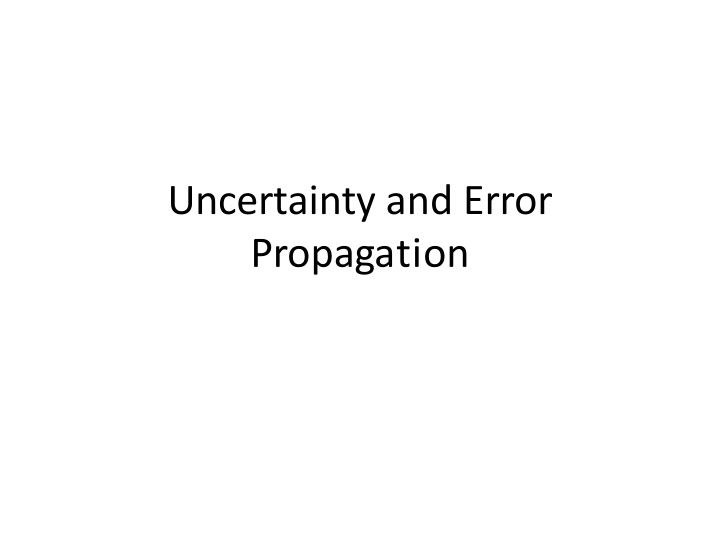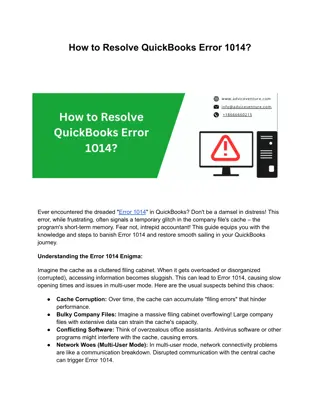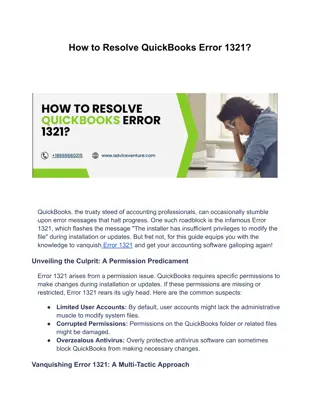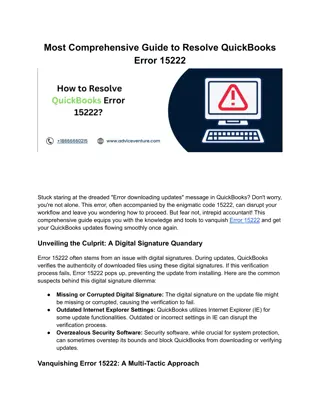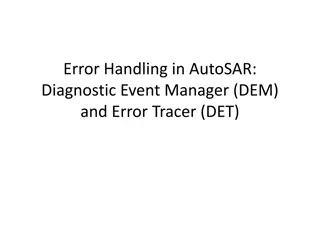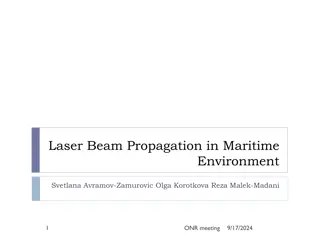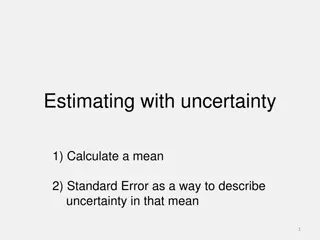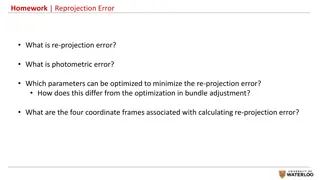Error Propagation and Uncertainty in System Analysis
Explore the intricate concept of error propagation and uncertainty in system analysis. Dive into the Gaussian distribution, perception of uncertainty, and the effective propagation of uncertainties in multi-input, multi-output systems. Understand how random variables interact, how variances combine, and how gradients play a crucial role in determining the importance of changes. Unravel the complexities of nonlinear error propagation problems and discover the laws governing covariance matrices in various scenarios.
Uploaded on Feb 24, 2025 | 0 Views
Download Presentation

Please find below an Image/Link to download the presentation.
The content on the website is provided AS IS for your information and personal use only. It may not be sold, licensed, or shared on other websites without obtaining consent from the author.If you encounter any issues during the download, it is possible that the publisher has removed the file from their server.
You are allowed to download the files provided on this website for personal or commercial use, subject to the condition that they are used lawfully. All files are the property of their respective owners.
The content on the website is provided AS IS for your information and personal use only. It may not be sold, licensed, or shared on other websites without obtaining consent from the author.
E N D
Presentation Transcript
Uncertainty and Error Propagation
Uncertainty Representation (2) 4b 2 4b - Perception - Uncertainty
Gaussian Distribution 0.4 68.26% 95.44% 99.72% 4b 5 -2 -1 1 2 4b - Perception - Uncertainty
2D Gaussian Distribution How does uncertainty propagate?
Error Propagation Law Sometimes random variates are combinations of others Example: x, y and theta result from wheel slip (two random variates) If the PDFs are Gaussian, their variances add up Intuition: weigh each component with their variance
Error propagation Random variable Y is a function of random variable X New variance Weighed by the gradient with respect to X Measure of how important a change in X is to Y Multi-input, Multi-output leads to covariance matrices
The Error Propagation Law Error propagation in a multiple-input multi-output system with n inputs and m outputs. X1 Y1 Xi Yi System Xn Ym Y = ( ... ) f X X 1 j j n 4b 9 4b - Perception - Uncertainty
The Error Propagation Law One-dimensional case of a nonlinear error propagation problem It can be shown that the output covariance matrix CY is given by the error propagation law: where CX: covariance matrix representing the input uncertainties CY: covariance matrix representing the propagated uncertainties for the outputs. FX: is the Jacobian matrix defined as: which is the transposed of the gradient o f(x)
Example: Odometry 1. Forward Kinematics (maps wheel slip to pose) 2. Error update Component from Motion Additional wheel - slip Propagation from position p to new position p
Example: Odometry 3.Partial derivatives of kinematics with respect to pose 4.Partial derivates of kinematics with respect to wheel-slip Partial derivatives of of f with respect and (3x2) matrix Wheel slip covariance matrix
Summary Most variables describing a robot s state are random variables Variates of a random variable are drawn from Probability Density Functions (PDF) A common, because convenient, PDF is the Gaussian Distribu1on defined by its mean and variance For Gaussians, variances add up and are weighed by the impact they have on the combined random variable ( Error Propagation Law )
